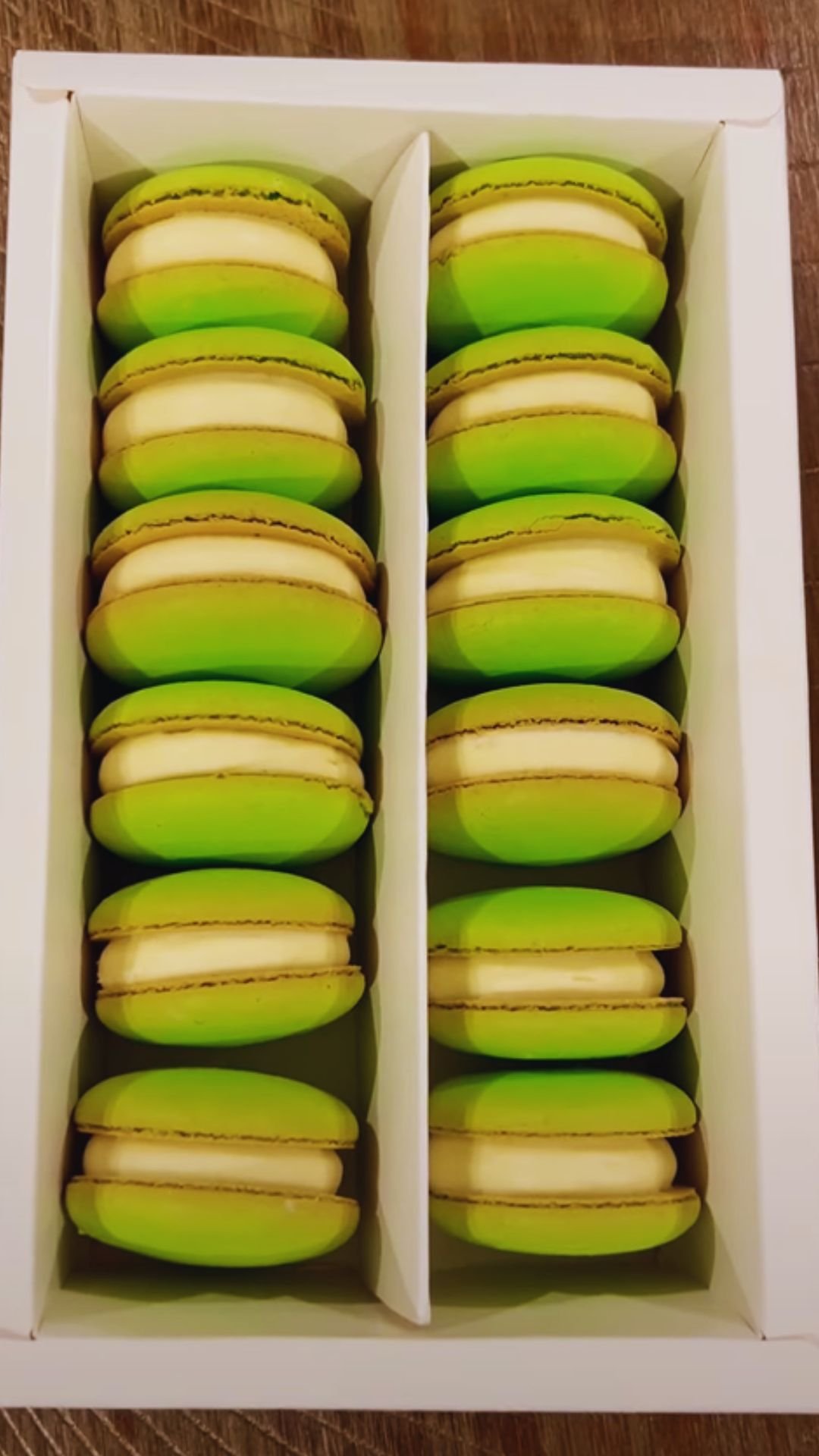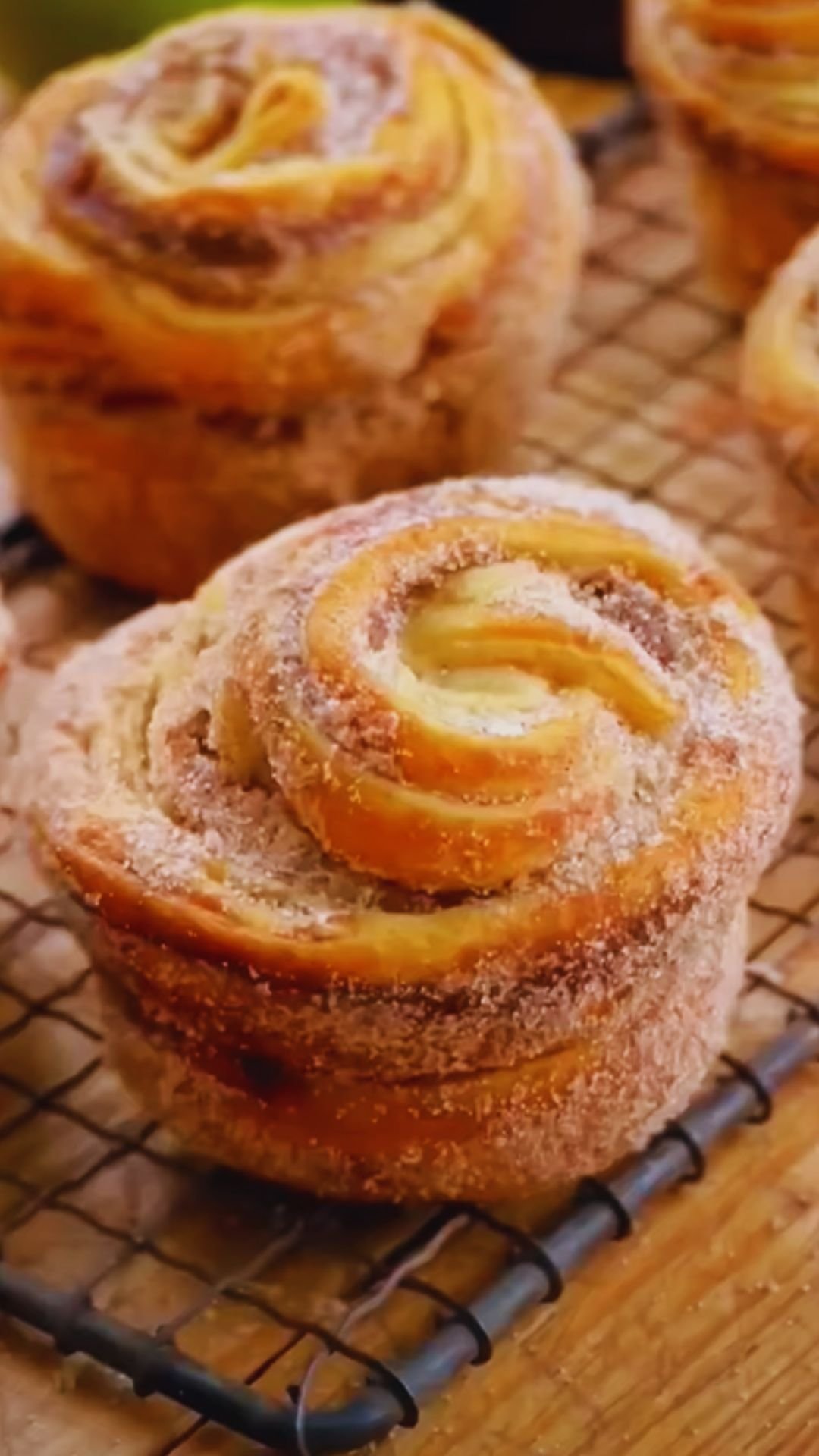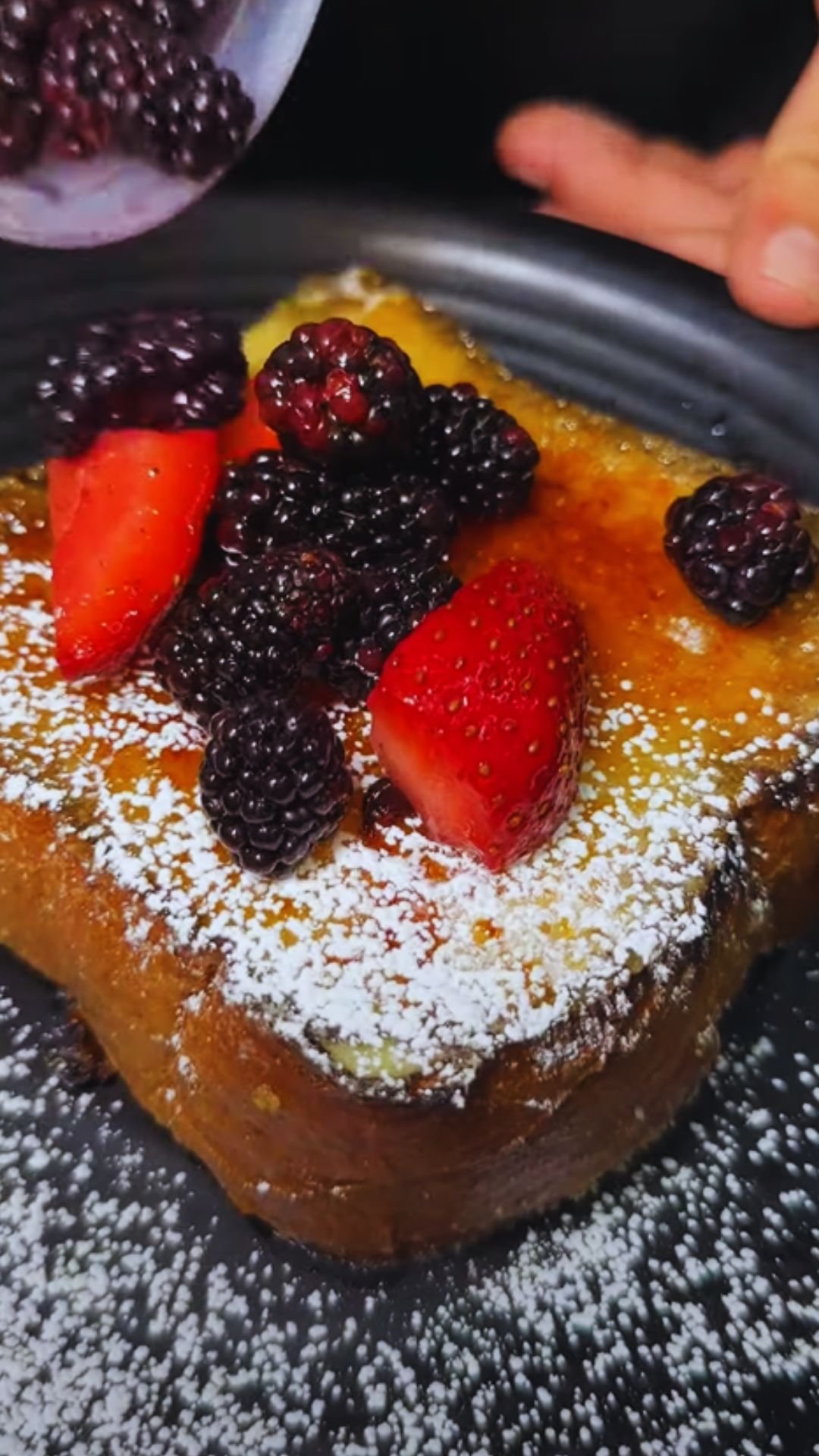Have you ever found yourself torn between the sophisticated allure of a French macaron and the nostalgic comfort of a Boston cream pie? Well, I’m thrilled to tell you that you no longer have to choose! After countless hours in my kitchen (and yes, a few spectacular failures that my family still teases me about), I’ve perfected a recipe that marries these two beloved desserts into one extraordinary treat: Boston Cream Pie Macarons.
These delicate almond cookies sandwich a luscious vanilla pastry cream and are topped with a decadent chocolate ganache – capturing all the magic of Boston cream pie in an elegant, bite-sized format. They’re perfect for impressing guests at dinner parties, gifting to dessert lovers, or simply treating yourself to something special on a quiet afternoon.
The Origin Story: When Two Dessert Worlds Collide
Before diving into my recipe, let’s appreciate the heritage of these two iconic desserts. The macaron (not to be confused with the coconut macaroon) originated in Italy and was perfected in France, becoming a symbol of Parisian patisserie excellence. With their smooth tops, ruffled “feet,” and tender-chewy texture, macarons have captivated dessert enthusiasts worldwide.
Meanwhile, Boston cream pie, despite its name, is actually a cake – specifically, a golden sponge cake filled with vanilla custard and topped with chocolate glaze. Created in the 1850s at Boston’s Parker House Hotel (now the Omni Parker House), it became so beloved that it was declared the official Massachusetts state dessert in 1996.
My fusion creation honors both traditions while creating something entirely new. Let’s get baking!
Essential Equipment
Before we begin, make sure you have these tools ready:
- Kitchen scale (precision is key for macarons)
- Stand mixer with whisk attachment (or electric hand mixer)
- Sieve or fine-mesh strainer
- Rubber spatula
- Piping bags
- Round piping tips (one large, one small)
- Baking sheets
- Silicone baking mats or parchment paper
- Small saucepan
- Whisk
- Mixing bowls
Ingredient Breakdown
For the Macaron Shells:
- 100g egg whites (approximately 3 large eggs), aged at room temperature for 24 hours
- 100g granulated sugar
- 110g almond flour, finely ground
- 200g powdered sugar
- 1 tsp vanilla extract
- Yellow food coloring (gel is preferred)
For the Vanilla Pastry Cream:
- 240ml whole milk
- 1 vanilla bean, split and scraped (or 2 tsp high-quality vanilla extract)
- 4 large egg yolks
- 75g granulated sugar
- 20g cornstarch
- 25g unsalted butter, cold and cubed
- Pinch of salt
For the Chocolate Ganache:
- 100g dark chocolate (60-70% cacao), finely chopped
- 80ml heavy cream
- 15g unsalted butter, at room temperature
The Science Behind Perfect Macarons
What makes macarons so special – and sometimes challenging – is the delicate balance of chemistry and technique. Here’s what’s happening behind the scenes:
- Aged egg whites: Aging egg whites allows some moisture to evaporate, which concentrates the proteins and creates a more stable meringue.
- Macaronage technique: The folding technique (called macaronage) deflates the meringue just enough to create the proper consistency.
- Resting period: This develops a skin on the piped macaron batter, which is crucial for forming the signature “feet” when baking.
- Oven temperature: Too hot, and your shells crack; too cool, and they won’t rise properly.
The Recipe: Boston Cream Pie Macarons
Stage 1: Preparing the Vanilla Pastry Cream (Make Ahead)
- In a medium saucepan, heat milk and vanilla bean (if using) until just simmering. Remove from heat, cover, and let steep for 15 minutes to infuse vanilla flavor.
- Meanwhile, in a bowl, whisk together egg yolks, sugar, and cornstarch until pale and thick.
- Remove vanilla bean from milk (if used). Gradually add hot milk to egg mixture while whisking constantly to prevent scrambling.
- Return mixture to saucepan and cook over medium heat, whisking continuously, until thickened (about 2-3 minutes).
- Remove from heat and stir in cold butter pieces and a pinch of salt until fully incorporated.
- If using vanilla extract instead of bean, add it now.
- Pour custard into a clean bowl. Press plastic wrap directly onto surface to prevent skin formation.
- Refrigerate for at least 4 hours or overnight until completely chilled and set.
Stage 2: Making the Macaron Shells
- Line two baking sheets with silicone mats or parchment paper.
- Sift together almond flour and powdered sugar into a large bowl, discarding any large particles.
- In a stand mixer fitted with the whisk attachment, beat egg whites on medium speed until foamy.
- Gradually add granulated sugar while continuing to beat.
- Increase speed to medium-high and beat until stiff, glossy peaks form (about 5-7 minutes).
- Add vanilla extract and a few drops of yellow food coloring, then beat briefly to incorporate.
- Add the sifted dry ingredients to the meringue in three additions, folding gently with a rubber spatula after each addition.
- Continue folding using the macaronage technique: press the batter against the sides of the bowl, then scrape and fold. Repeat until the batter flows like lava and forms a ribbon that dissolves back into itself within 30 seconds.
- Transfer batter to a piping bag fitted with a round tip.
- Pipe 1.5-inch rounds onto prepared baking sheets, spacing them about 2 inches apart.
- Tap the baking sheets firmly against the counter several times to release air bubbles.
- Let the piped macarons rest at room temperature for 30-60 minutes until a skin forms on top and they’re no longer sticky to the touch.
- Preheat oven to 300°F (150°C).
- Bake one sheet at a time for 15-18 minutes, rotating halfway through.
- Allow to cool completely on the baking sheet before attempting to remove.
Stage 3: Preparing the Chocolate Ganache
- Place finely chopped chocolate in a heat-resistant bowl.
- Heat heavy cream in a small saucepan until it just begins to simmer.
- Pour hot cream over chocolate and let sit for 1 minute.
- Gently stir until chocolate is completely melted and mixture is smooth.
- Add butter and stir until incorporated and glossy.
- Let cool until thickened but still pipeable.
Stage 4: Assembly
- Match macaron shells in pairs of similar size and shape.
- Transfer the chilled pastry cream to a piping bag fitted with a small round tip.
- Pipe a ring of pastry cream around the edge of the flat side of half the macaron shells, leaving a small well in the center.
- Transfer the chocolate ganache to a piping bag and fill the center of each pastry cream ring with a small amount of ganache.
- Gently place the matching shell on top, pressing just enough to spread the fillings to the edges without squeezing them out.
- Refrigerate assembled macarons in an airtight container for at least 24 hours to allow flavors to meld and shells to soften slightly.
- Bring to room temperature for 30 minutes before serving for optimal texture and flavor.
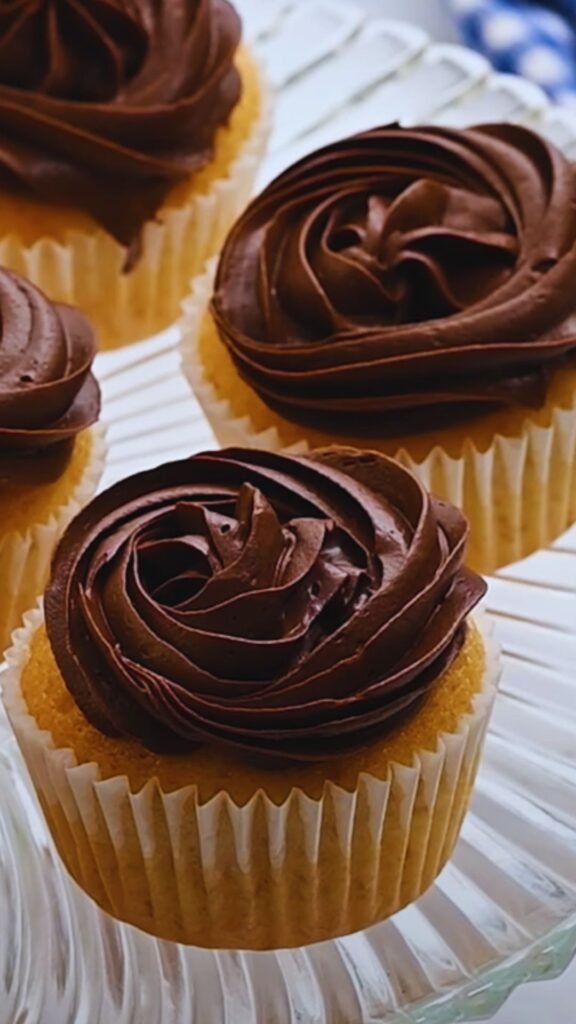
Troubleshooting Guide: Common Macaron Problems & Solutions
| Problem | Potential Cause | Solution |
|---|---|---|
| No feet formed | Insufficient resting time | Ensure macarons develop a skin before baking |
| Hollow shells | Overbeaten meringue or too high oven temperature | Beat meringue just to stiff peaks; check oven temperature with thermometer |
| Cracked tops | Too much air in batter or oven too hot | Tap sheets firmly; reduce oven temperature by 25°F |
| Uneven shapes | Inconsistent piping technique | Use a template under parchment paper; practice uniform pressure |
| Stuck to mat/paper | Underbaked | Increase baking time by 1-2 minutes; let cool completely before removing |
| Runny filling | Pastry cream not thick enough | Ensure proper cooking temperature; increase cornstarch slightly if needed |
| Grainy shells | Almond flour not fine enough | Process almond flour with powdered sugar in food processor, then sift thoroughly |
| Too sweet | Inherent in traditional recipe | Balance with slightly less sweet filling; add pinch of salt to shells |
Advanced Tips for Macaron Perfection
After countless batches (and learning from my many mistakes), I’ve discovered these pro tips:
- Weather matters: Humidity is the enemy of macarons. Choose a dry day for best results.
- Egg white age: For optimal results, separate eggs 24-48 hours before making macarons and keep whites covered in the refrigerator, then bring to room temperature before using.
- Testing batter consistency: Lift some batter with your spatula and let it fall. It should flow like molten lava and form a figure-8 without breaking.
- Aging improves flavor: While it’s tempting to devour these immediately, macarons truly reach perfection after 24-48 hours in the refrigerator.
- Shell texture: The perfect macaron shell should have a slight crunch when you bite into it, giving way to a chewy interior.
Nutritional Information
| Nutrient | Amount per Macaron |
|---|---|
| Calories | 195 |
| Total Fat | 12g |
| Saturated Fat | 5g |
| Cholesterol | 62mg |
| Sodium | 35mg |
| Total Carbohydrates | 20g |
| Dietary Fiber | 1g |
| Sugars | 17g |
| Protein | 3g |
Note: Nutritional values are approximate and may vary based on specific ingredients used.
Storage & Shelf Life
These Boston Cream Pie Macarons can be stored in an airtight container in the refrigerator for up to 5 days. They can also be frozen for up to 3 months – just thaw them in the refrigerator overnight before serving.
I find that the texture of macarons actually improves after about 24-48 hours, as the filling slightly softens the shells, creating that perfect chewy-crisp balance.

Serving Suggestions
These elegant treats deserve proper presentation! Here are my favorite ways to serve them:
- Arrange them on a tiered cake stand for an impressive dessert display
- Pair with hot coffee or tea for an elevated afternoon break
- Serve alongside fresh berries for a beautiful color contrast
- Package in clear gift boxes tied with ribbon for wonderful homemade gifts
- Create a dessert board with these macarons as the centerpiece, surrounded by fresh fruit, chocolate truffles, and small cookies
Flavor Variations
While the classic Boston cream pie flavor combination is divine, you can experiment with these variations:
- Mocha Boston Cream: Add 1 tablespoon espresso powder to the chocolate ganache
- Orange Boston Cream: Add orange zest to the pastry cream and a splash of orange liqueur to the ganache
- Coconut Boston Cream: Replace 25% of the almond flour with coconut flour and add coconut extract to the pastry cream
- Salted Caramel Boston Cream: Add a small dollop of salted caramel sauce to the center of the pastry cream
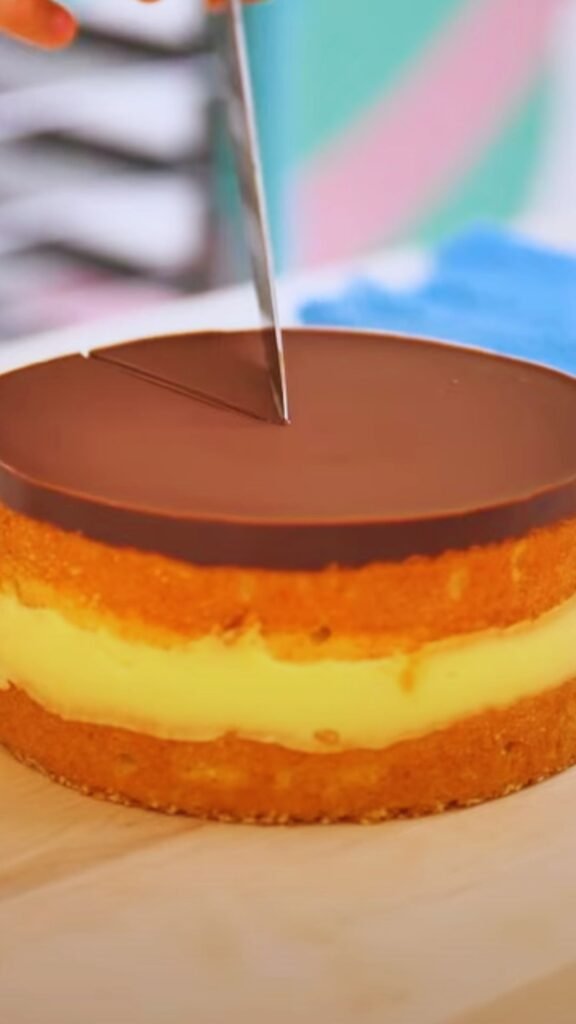
Questions & Answers
Q: Can I make these macarons without a kitchen scale? While I strongly recommend using a scale for precision, you can use volume measurements: 3 egg whites, 1/2 cup granulated sugar, 1 cup almond flour, and 1 3/4 cups powdered sugar. However, results may vary.
Q: Why did my macarons come out hollow? Hollow macarons typically result from overbeaten egg whites or too high an oven temperature. Try beating the whites just until stiff peaks form and consider reducing your oven temperature by 15-25°F.
Q: Can I use regular flour instead of almond flour? Unfortunately, no. Almond flour is essential for authentic macarons – it provides the unique texture and flavor that defines them. Regular wheat flour would create an entirely different product.
Q: How far in advance can I make these for a party? These macarons actually improve with a day or two of aging! I recommend making them 2-3 days before your event for optimal texture and flavor development.
Q: Can I make the components separately and assemble later? Absolutely! The shells can be made up to 5 days ahead and stored in an airtight container. The pastry cream can be made 2-3 days ahead. Just assemble within 24 hours of serving.
Q: Why didn’t my macarons develop “feet”? This typically happens when the shells don’t form a proper skin before baking. Make sure to let them rest until they’re no longer tacky to the touch before baking.
Q: Are macarons really worth all this effort? As someone who’s made countless batches, I can honestly say yes! The satisfaction of creating these delicate treats is immense, and the combination of textures and flavors is incomparable. Plus, you’ll earn serious bragging rights!
Final Thoughts: The Joy of Fusion Desserts
Creating these Boston Cream Pie Macarons has been one of my most rewarding culinary adventures. There’s something magical about honoring two distinct dessert traditions while creating something new that captures the essence of both.
I encourage you to approach this recipe with patience and a sense of adventure. Yes, macarons require precision and attention to detail, but the process itself can be meditative and deeply satisfying. And when you bite into that perfect combination of delicate almond shell, silky vanilla custard, and rich chocolate ganache – well, that moment of culinary bliss makes every careful step worthwhile.
Remember that even professional pastry chefs have macaron mishaps! Each batch teaches you something new, and before long, you’ll develop an intuitive feel for the process. So preheat that oven, break out your kitchen scale, and embark on your own Boston Cream Pie Macaron journey. I’d love to hear how yours turn out!
